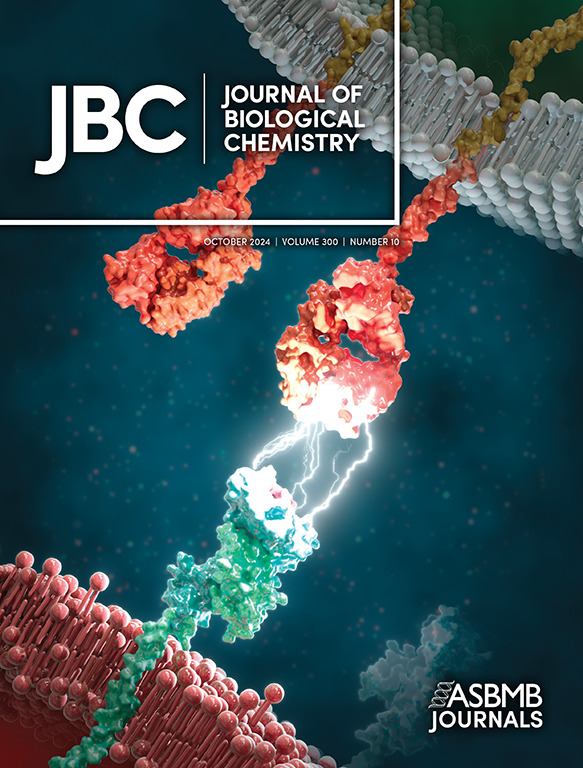Silencing PIM1 inhibits ENO1-induced AKT activation and attenuates fibrillogenesis during spinal cord injury-induced skeletal muscle atrophy.
IF 4
2区 生物学
Q2 BIOCHEMISTRY & MOLECULAR BIOLOGY
引用次数: 0
Abstract
Spinal cord injury (SCI) induces rapid and extensive skeletal muscle atrophy. During skeletal muscle atrophy, numerous extracellular matrix (ECM) and fibroblasts accumulate, impairing muscle function. The pro-viral Integration site for moloney murine leukaemia virus kinases-1(PIM1) is considered a positive regulator of inflammation. In our study, we found that PIM1 was overexpressed in the fibrotic regions of the skeletal muscle following SCI. We then explored the effects of the selective PIM1 inhibitor TP-3654 on fibrosis. TP-3654 decreased fibrosis by promoting fibroblast apoptosis, reducing proliferation and migration, and inhibiting tumor growth factor (TGF)-β classical and non-classical signaling pathways. In vivo PIM1 pharmacological inhibition with TP-3654 alleviates skeletal muscle fibrosis, mitigating skeletal muscle atrophy by decreasing ECM formation, enhancing the cross-sectional area of muscle fibers, and increasing muscle weight. Furthermore, we found a potential interaction between PIM1 and the enolase (ENO1)/protein kinase B (AKT) pathway. Downregulation of PIM1 expression in fibroblasts using drugs or siRNA leads to decreased ENO1 expression, concurrent with AKT phosphorylation reduction and suppressor of mothers against decapentaplegic (Smad)2/3 dephosphorylation within the TGF-β classical pathway. In summary, PIM1 might be an important target gene for future skeletal muscle atrophy treatments.沉默PIM1可抑制eno1诱导的AKT激活,减轻脊髓损伤引起的骨骼肌萎缩期间的纤维形成。
脊髓损伤(SCI)引起快速和广泛的骨骼肌萎缩。骨骼肌萎缩过程中,大量细胞外基质(ECM)和成纤维细胞积累,损害肌肉功能。moloney小鼠白血病病毒激酶-1(PIM1)的前病毒整合位点被认为是炎症的积极调节因子。在我们的研究中,我们发现PIM1在脊髓损伤后骨骼肌纤维化区域过表达。然后,我们探索了选择性PIM1抑制剂TP-3654对纤维化的影响。TP-3654通过促进成纤维细胞凋亡、减少增殖和迁移、抑制肿瘤生长因子(TGF)-β经典和非经典信号通路来减少纤维化。体内用TP-3654药物抑制PIM1可减轻骨骼肌纤维化,通过减少ECM形成、增加肌纤维横截面积、增加肌肉重量减轻骨骼肌萎缩。此外,我们发现PIM1与烯醇化酶(ENO1)/蛋白激酶B (AKT)通路之间存在潜在的相互作用。使用药物或siRNA下调成纤维细胞中PIM1的表达导致ENO1表达降低,同时AKT磷酸化降低,抑制TGF-β经典通路中母亲抗十肢截瘫(Smad)2/3去磷酸化。综上所述,PIM1可能是未来骨骼肌萎缩治疗的重要靶基因。
本文章由计算机程序翻译,如有差异,请以英文原文为准。
求助全文
约1分钟内获得全文
求助全文
来源期刊

Journal of Biological Chemistry
Biochemistry, Genetics and Molecular Biology-Biochemistry
自引率
4.20%
发文量
1233
期刊介绍:
The Journal of Biological Chemistry welcomes high-quality science that seeks to elucidate the molecular and cellular basis of biological processes. Papers published in JBC can therefore fall under the umbrellas of not only biological chemistry, chemical biology, or biochemistry, but also allied disciplines such as biophysics, systems biology, RNA biology, immunology, microbiology, neurobiology, epigenetics, computational biology, ’omics, and many more. The outcome of our focus on papers that contribute novel and important mechanistic insights, rather than on a particular topic area, is that JBC is truly a melting pot for scientists across disciplines. In addition, JBC welcomes papers that describe methods that will help scientists push their biochemical inquiries forward and resources that will be of use to the research community.
 求助内容:
求助内容: 应助结果提醒方式:
应助结果提醒方式:


